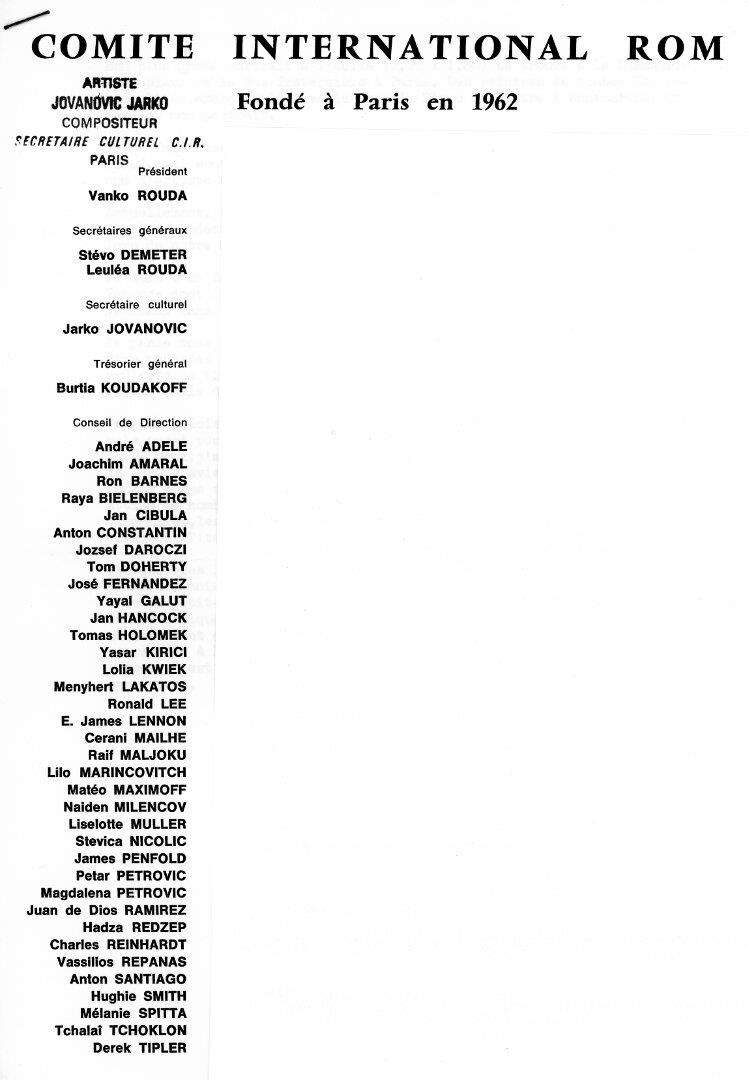Papier à en-tête du Comité internationl rom datant de 1972, avec la composition de son bureau (Président, secrétaires, trésorier) et de son Conseil de direction. En fait le nom de Comité international rom a été adopté lors du Congrès mondial de 1971. Le nom précédent était Comité international tzigane, et son ancêtre, auquel il est fait référence par le fait de noter que le Comité a été “Fondé à Paris en 1962” était la Communauté mondiale gitane (voir tous les détais dans Jean-Pierre Liégeois, Mutation tsigane, Editions Complexe, Bruxelles – Presses Universitaires de France, Paris, 1976).
Papier à en-tête du Comité internationl rom datant de 1972
Comité International Rom | Papier à en-tête du Comité internationl rom datant de 1972 | letter | France | 1972 | rom_90011
Licensed by: Jean-Pierre Liégeois I Licensed under: CC-BY-NC-ND 4.0 International | Provided by: Jean-Pierre Liégeois – Private Archive
Credits
Licensed by: Jean-Pierre Liégeois I Licensed under: CC-BY-NC-ND 4.0 International | Provided by: Jean-Pierre Liégeois – Private Archive
Description
Description
A letter-head dating from 1972, listing its personnel. Note the name Comité International Rom, as adopted by the 1971 World Congress; but its claim to be the successor to the CIT and the CMG is asserted by the claim to have been founded in 1962. [Note also that this letter-head dates from after the first splits in the UK Gypsy Council, and all the UK members are from the “National Gypsy Council” faction led by Hughie Smith, and do not include the Romany Guild faction led by Tom Lee and Fred Wood, or the Southern Gypsy Council faction led by Roy Wells, which was supported at a distance by Grattan Puxon, who had moved to Skopje. None of the important Yugoslav leaders,with whom Grattan Puxon was working, such as Abdi Faik, Slobodan Berberski, Šaip Jusuf, Sait Balič and Rajko Durič, who came to dominate the IRU from the mid-1980s, are included either!]
Details
- Comité International Rom (Author) (Paris, France)




